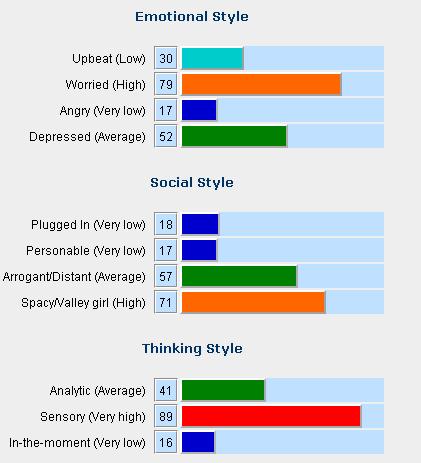A new study has used millions of tweets from around the world to analyse how the moods of people change through the day. Have a go at analysing your own twitter mood, using the same analysis software – which New Zealanders helped to develop.

The American research, published in the international journal Science, was based on a sample of 509 million tweets from 2.4 million users in 84 countries.
The researchers analysed the affect (mood) of the language used in tweets at various times of the day, using a language analysis system developed in part by a New Zealander (see below).
In case you were wondering, emoticons such as :) and :( were included.
Around the world, people showed similar rhythms of mood across the day.
The researchers discovered two daily peaks in which tweets represented a positive attitude – relatively early in the morning and again near midnight, suggesting mood may be shaped by work-related stress.
Positive tweets were also more abundant on Saturdays and Sundays, with the morning peaks occurring about two hours later in the day. This implied people woke later on weekends.
These patterns were reflected in cultures and countries throughout the world, but shifted with the difference in time and work schedule. For example, positive tweets and late-morning mood peaks were more prominent on Fridays and Saturdays in the United Arab Emirates, where the traditional working week is Sunday through Thursday.
Twitter is a micro blogging service in which users can post 140 character messages (tweets) to other users who follow their announcements online.
A Kiwi connection
The text analysis software used in the study, known as Linguistic Inquiry and Word Count (LIWC), was first developed in the early 2000’s as a joint project between the University of Auckland Medical School and the University of Texas.
(The developers have provided access to the software so that members of the public can analyse any twitter feed for emotional, social and thinking style: www.analyzewords.com.)
Prof Roger J Booth, University of Auckland Medical School, helped to create the LIWC and told the SMC:
“LIWC is a method of identifying categories of expression in written text. It assigns each word to a category or categories based on what that word generally denotes and then reports the words in each category as a percentage of the total words in the text being analysed.
“In this study, the authors have used words associated with the LIWC categories that can contribute to positive affect (or positive emotion) and categories that contribute to negative affect (or negative emotion). Positive affect (PA) includes words expressing to such things as enthusiasm, delight, activeness, and alertness, while negative affect (NA) includes such words expressing such things as distress, fear, anger, guilt, anxiety, and disgust.
“Although everyone will express their emotions in slightly different ways, this study has examined the expression throughout the day and looked for changes in each person’s emotional expression related to their average expression. By doing this, they have controlled for some of the individual variability.
“Also, because their study has analysed millions of twitter samples and ensured that each individual’s samples comprise a reasonably large number of tweets, their results provided quite an accurate representation of expressed emotions.
“The authors of the article discuss time of day, day of week and season (day length) as contributors to the effects they see. Three interesting things that come out of their work are (1) the similarity of diurnal, weekly and season changes across cultures, (2) the relative independence or PA and NA – i.e. negative affect is not simply the absence of positive affect, and (3) the fact that positive affect was associated with day length (i.e. season) but negative affect was not.
“One of the strengths of this study is its size, another is its cross-cultural nature, a third is that it is ‘naturalistic’ – i.e. it is people in their normal lives sending twitter messages. The authors discuss several possible limitations such as different cultural norms in different countries but found that this was unlikely to have affected their results much.
“They also discussed the potential problems that might have been associated with emotion words being part of phrases. An example here would be “good morning” or “good night” elevating the scores of positive emotion at the times of day these greetings are used. However, when they filtered out such phrases and re-analysed their data they got the same results, so these potential limitations were not causing and significant skewing.”
NB Prof Booth is not an author on the Science paper, but helped design the software used in this study (and others).